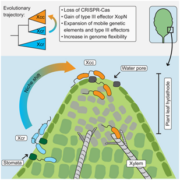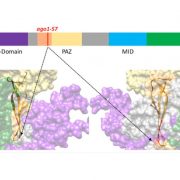Evidence for mid-Holocene rice domestication in the Americas
 Rice is one of our most important crops, and previous work has indicated that it was domesticated independently in Asia (Oryza sativa) and Africa (Oryza glaberrima). Using archeological approaches, Hilbert et al. for the first time show evidence for domestication of a rice species (Oryza sp.) in the Americas. From excavation sites in Brazil, the authors obtained phytoliths (literally, “plant stones”), which are distinctive and characteristic silica deposits that form in plant tissues. Previous studies have shown that as plant sizes increase as a result of domestication, so do the sizes of phytoliths. The authors showed that not only did phytolith size increase but so did the proportion of rice phytoliths as compared to all phytoliths, and the proportion of husk to seed+stem phytoliths, indicating an increasing reliance on rice in the diet and better harvesting strategies. Nature Ecol. Evol. 10.1038/s41559-017-0322-4
Rice is one of our most important crops, and previous work has indicated that it was domesticated independently in Asia (Oryza sativa) and Africa (Oryza glaberrima). Using archeological approaches, Hilbert et al. for the first time show evidence for domestication of a rice species (Oryza sp.) in the Americas. From excavation sites in Brazil, the authors obtained phytoliths (literally, “plant stones”), which are distinctive and characteristic silica deposits that form in plant tissues. Previous studies have shown that as plant sizes increase as a result of domestication, so do the sizes of phytoliths. The authors showed that not only did phytolith size increase but so did the proportion of rice phytoliths as compared to all phytoliths, and the proportion of husk to seed+stem phytoliths, indicating an increasing reliance on rice in the diet and better harvesting strategies. Nature Ecol. Evol. 10.1038/s41559-017-0322-4









